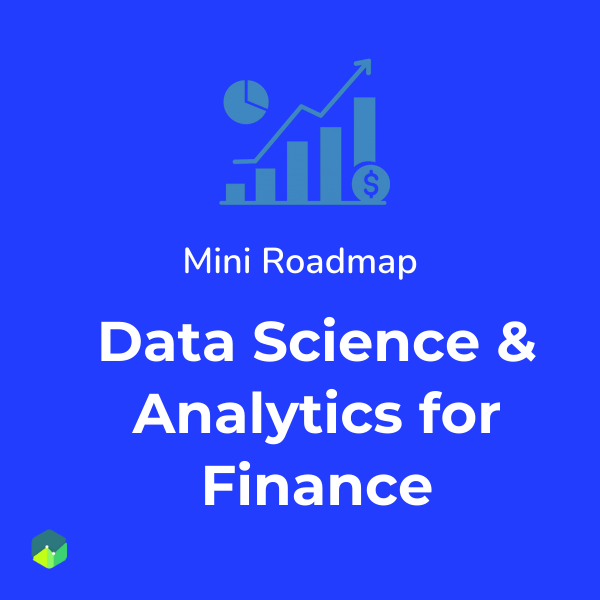Get full access to all Data Science, Machine Learning, and AI courses built for finance professionals.
One-time payment - Lifetime access
Or create a free account to start

A step-by-step guide covering Python, SQL, analytics, and finance applications.
Or create a free account to access more
Get full access to all Data Science, Machine Learning, and AI courses built for finance professionals.
One-time payment - Lifetime access
Or create a free account to start

A step-by-step guide covering Python, SQL, analytics, and finance applications.
Or create a free account to access more
The face of banking is changing and fast. Pick any aspect of banking – risk management, pricing, marketing outreach, customer outreach, product development, cost and revenue allocation – data science is there. The face of the banking industry has been evolving rapidly, particularly post the financial crisis of 2008. Banks were some of the earliest adopters of information technology for processes and security. The growing size of banks and lowered customer loyalty means customers expect quicker and more efficient operational efficiency. Naturally banks are looking at better ways to understand customers and retain them. They are looking at patterns within the data to understand transactional data and engage with customers more meaningfully.

The data available to banks thanks to transactions are numerous. These records were used in risk and fraud management. The advent of data science has led to better management of the information that is flowing in from multiple channels in real-time.
Banks are beginning to understand the importance of collating and utilizing their internal data such as debit and credit transactions, purchase history and patterns, mode of communication and brand loyalty. Internet banking data, social media and mobile phone usage for banking have further opened the floodgates of data flowing into the banking system.
Mining these multiple sources of data is a challenge. The data comes in various formats and sometimes is fairly unstructured. The data has to be therefore ‘cleaned’ or data munging takes place. Once the data is in comparable form and cleaned of useless data, analysts use various data analytics software, often deeply customized to arrive at insights. Often third party data will be added to the mix to achieve a holistic picture.
Analytical methods used to derive value from the data are hypothesis testing, crowdsourcing, data fusion and integration, machine learning, natural language processing, signal processing, simulation, time series analysis and visualization.
Banks use data science in the areas of customer service, fraud detection, forecasting, understanding consumer sentiment, customer profiling and target marketing, among others.
Banks are using unstructured data from social media to assess how customers view the brand and if they are happy with their brand offerings. Data science helps banks get a full segment-wise view of their customers. Sales persons can tweak their pitch by looking at the customer’s Code Halo or ‘virtual self’ that encapsulates all digital transactions. The average cost of each channel can be more accurately arrived at, as can strategies to migrate customers to cheaper channels.
Banks use data science for loan appraisals or lending in any form. It also helps in sending up red flags for specs provided to alert banks to fraud.
Banks are using their data to detect fraud even before it happens. How do they do that? Analytics help alert to any change or ‘out of pattern’ spending. Data science has helped unearth patterns in false insurance claims. A simple detail like the use of ‘ed’ over the more active ‘ing’ was noticed in most false claims.
The advantages for banks who are relying on data science and analytics are too many. The benefits for banks by using data science are in sales automation, per customer profitability, usage of customized dashboards, regulatory compliance, budgeting and fraud.